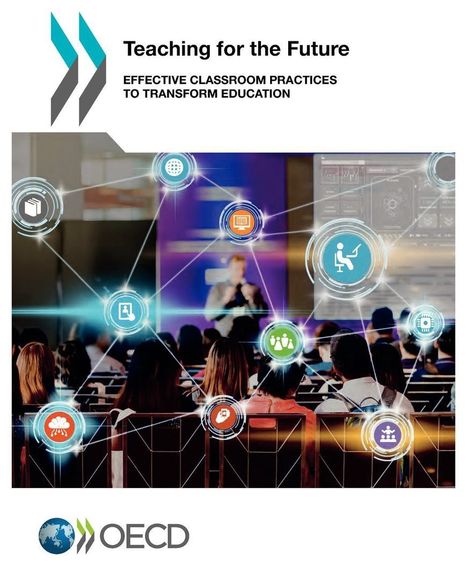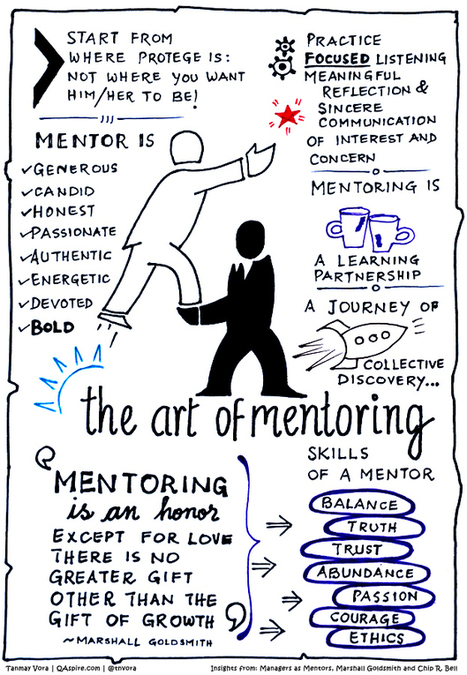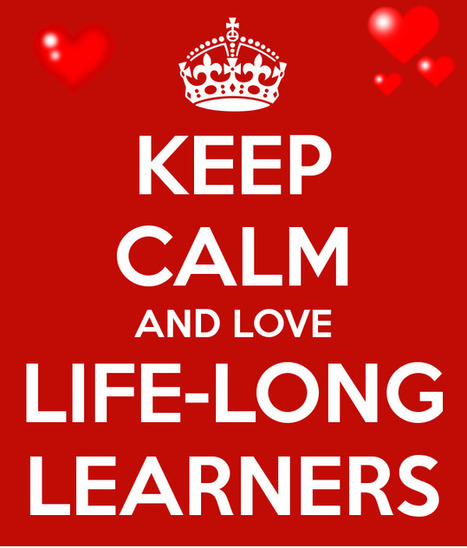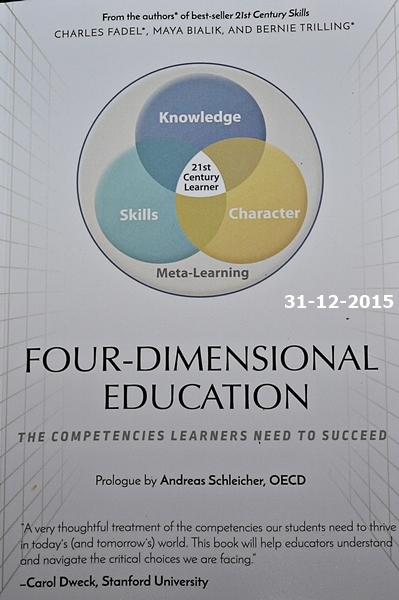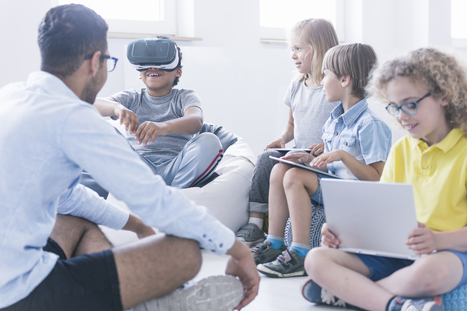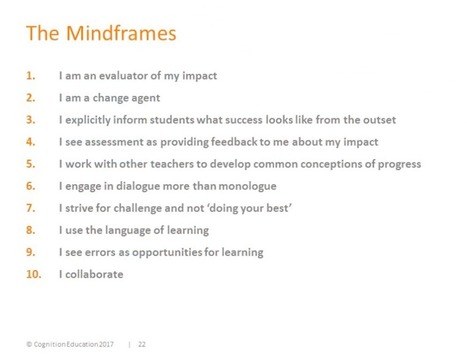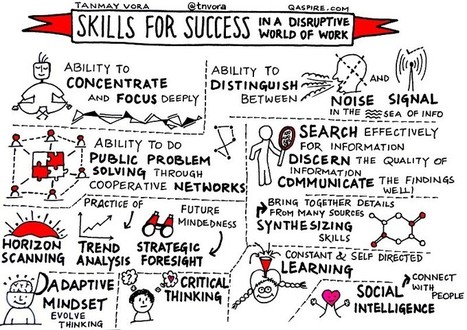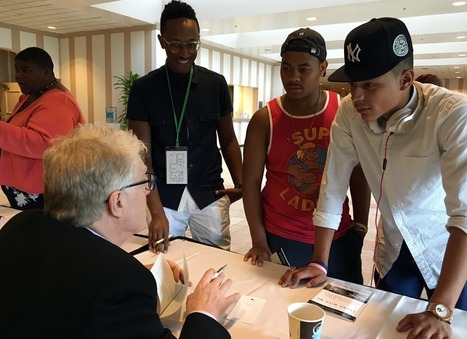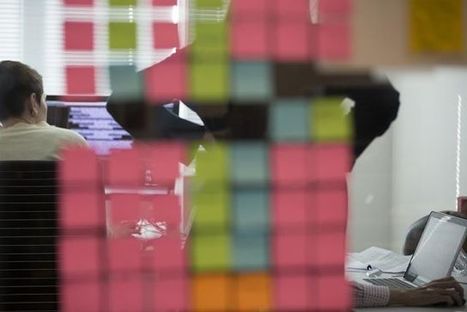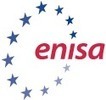 Your new post is loading...
 Your new post is loading...
Blockchain is often touted as a world-changing technology and in many ways, it is. However, it isn’t necessarily the cure-all panacea for the world’s problems that many evangelists would have you believe.
Here’s a breakdown of some of the issues with blockchain that anyone thinking of using it should understand. Starting with perhaps the biggest…
Blockchain has an environmental cost
At least, the way it is being used today, it does. Blockchain relies on encryption to provide its security as well as establish consensus over a distributed network. This essentially means that, in order to “prove” that a user has permission to write to the chain, complex algorithms must be run, which in turn require large amounts of computing power. Of course, this comes at a cost. Taking the most widely known and used blockchain as an example – Bitcoin – last year it was claimed that the computing power required to keep the network running consumes as much energy as was used by 159 of the world’s nations.
Yes, Bitcoin’s blockchain is a hugely valuable network – with a current market capacity at the time of writing of over $170 billion – so sophisticated and computationally intense security is essential. Smaller scale blockchains – such as those that an organization may deploy internally to securely monitor and record business activity – would consume a fraction of that. Nevertheless, it’s an important consideration and the environmental implications as well as the energy costs can’t be ignored.
Lack of regulation creates a risky environment
Read more in the article... Learn more / En savoir plus / Mehr erfahren: https://www.scoop.it/t/21st-century-learning-and-teaching/?&tag=blockchain
Via Gust MEES
A new study lends credence to what you’ve probably always suspected: social media is having a pretty negative effect on teenagers — Instagram and Snapchat being the worst culprits. The study, published today and called “Status of Mind,” was conducted by researchers for the Royal Society for Public Health in the UK. The researchers surveyed 1,479 British youths ages 14-24, asking them how they felt the different social media networks effected their mental health. They took in several factors such as body image, sleep deprivation, bullying, and self-identity. The results suggest the two worst social media networks for kids are Instagram and Snapchat, as they had terrible scores for body image, bullying, and anxiety. Twitter and Facebook weren’t much better, though. YouTube was the only one that apparently inspired more positive feelings than negative ones. Learn more / En savoir plus / Mehr erfahren: http://www.scoop.it/t/social-media-and-its-influence
Via Gust MEES, Jim Lerman
Teacher professional learning is of increasing interest as one way to support the increasingly complex skills students need to learn in preparation for further education and work in the 21st century. Sophisticated forms of teaching are needed to develop student competencies such as deep mastery of challenging content, critical thinking, complex problem-solving, effective communication and collaboration, and self-direction. In turn, effective professional development (PD) is needed to help teachers learn and refine the pedagogies required to teach these skills. However, research has shown that many PD initiatives appear ineffective in supporting changes in teacher practices and student learning. Accordingly, we set out to discover the features of effective PD. This paper reviews 35 methodologically rigorous studies that have demonstrated a positive link between teacher professional development, teaching practices, and student outcomes. We identify the features of these approaches and offer rich descriptions of these models to inform those seeking to understand the nature of the initiatives. Learn more / En savoir plus / Mehr erfahren: https://gustmees.wordpress.com/?s=coaching https://gustmees.wordpress.com/?s=professional+development
Via Gust MEES, Jim Lerman
Exponential technologies have a tendency to move from a deceptively slow pace of development to a disruptively fast pace. We often disregard or don’t notice technologies in the deceptive growth phase, until they begin changing the way we live and do business. Driven by information technologies, products and services become digitized, dematerialized, demonetized and/or democratized and enter a phase of exponential growth. Nicole Wilson, who was Singularity University’s vice president of faculty and curriculum until last year, believes education technology is currently in a phase of deceptive growth, and we are seeing the beginning of how exponential technologies are impacting 1) what we need to learn, 2) how we view schooling and society and 3) how we will teach and learn in the future. [Gust MEES] Simply put, as WE (#Schools) DON'T know WHAT THAT world would be, WE SHOULD prepare the #students #LEARNers for <===> #LEARNing2LEARN to become #LifeLongLEARNing persons! Please check my #blog post <===> https://gustmees.wordpress.com/.../teaching-was.../ <===> #ModernEDU #Coaching
Via Gust MEES
Perhaps the most important reason for developing metacognition is that it can improve the application of knowledge, skills, and character qualities in realms beyond the immediate context in which they were learned. This can result in the transfer of competencies across disciplines—important for students preparing for real-life situations where clear-cut divisions of disciplines fall away and one must select competencies from the entire gamut of their experience to effectively apply them to the challenges at hand. Even within academic settings, it is valuable—and often necessary—to apply principles and methods across disciplinary lines. Learn more / En savoir plus / Mehr erfahren: http://www.scoop.it/t/21st-century-learning-and-teaching/?tag=Four-Dimensional+Education%3A+The+Competencies+Learn
Via Gust MEES, Jim Lerman
What is professional development? It is pretty much anything that helps one develop professionally. At the heart, professional development is about growth and learning. In the field of education, it seems like many quickly think of educational opportunities that mimic what they see in their schools. As a result, they turn professional learning and education into schooling. The problem with that is that schooling is too limiting. In this age, there are many other exciting and high-impact learning opportunities for teachers that extend beyond traditional notions of schooling. When we hear the phrase “professional development,” certain practices likely come to mind, things like in-services and conferences. In the digital age, there are countless other opportunities for professional development and restricting one’s thoughts to just a few options limits our insight into what is possible for our students. With that in mind, here is a brainstorm of 20 options available to educators today. This is far from an exhaustive list, but it is enough to start exploring the possibilities. Feel free to suggest others in a comment to this post. Learn more: Professional Development: WHY EDUcators And TEACHers Can’t Catch UP THAT Quickly AND How-To Change It LEARNing To LEARN For MY Professional Development | I Did It MY Way
Via Gust MEES
|
The classroom of the future, according to the world’s best teachers
By Global Teacher Prize | March 2nd 2018
In many parts of the world, today’s classrooms are almost unrecognisable compared to those of a decade ago.
Technology is changing the way students learn and teachers teach. From interactive white boards replacing chalk boards to tablets replacing desktop computers, schools are becoming increasingly digital.
Looking ahead to 2030, greater internet connectivity and smarter technologies promise to radically reshape the classroom of the future.
We asked the Global Teacher Prize 2018 Finalists to share their views on how they feel the classroom will change in the coming decade, and what this means for the role of the teacher.
What do you think will be the biggest difference between the classroom of 2030 and the classroom of today?
Many of our Finalists predict that the trend of young people effectively teaching themselves will continue. Learn more / En savoir plus / Mehr erfahren: https://www.scoop.it/t/21st-century-learning-and-teaching/
Via Gust MEES, Jim Lerman
Education may be the passport to the future, but for all the good teaching out there, it would seem that schools are failing to impart some of the most important life skills, according to one educational expert.
Dr. Tony Wagner, co-director of Harvard's Change Leadership Group, argues that today’s school children are facing a “global achievement gap”, which is the gap between what even the best schools are teaching and the skills young people need to learn.
This has been exacerbated by two colliding trends: firstly, the global shift from an industrial economy to a knowledge economy, and secondly, the way in which today’s school children – brought up with the internet – are motivated to learn.
In his book The Global Achievement Gap, Wagner identifies seven core competencies every child needs in order to survive in the coming world of work.
1. Critical thinking and problem-solving 2. Collaboration across networks and leading by influence 3. Agility and adaptability 4. Initiative and entrepreneurialism 5. Effective oral and written communication 6. Accessing and analysing information
Via Gust MEES, Jim Lerman
It is almost universally acknowledged that in order to succeed in the 21st century, students must learn much more than the “three Rs” and basic computer competency. The term “21st century skills” is used often in educational circles to refer to a range of abilities and competencies that go beyond what has traditionally been taught in the classroom, including problem solving, communication, collaboration, creativity and innovation. Others define the term as “information literacy, media literacy, and information, communication and technology literacy.” More importantly, students need these skills because employers across a huge variety of industries increasingly demand them. A recent McKinsey report indicated that close to 40 percent of employers could not find people with the right skills while 60 percent “complain[ed] of a lack of preparation.” Even jobs that were once considered vocational, such as welding, petroleum production, and even factory work, are now high tech, and require specialized knowledge that includes not only a robust science background and familiarity with the computerized machinery that keeps heavy industry humming, but also critical thinking and collaboration skills. In other words, 21st century job growth is outpacing our ability to develop a prepared workforce, making it more critical than ever to teach these skills. Learn more / En savoir plus / Mehr erfahren: https://gustmees.wordpress.com/2015/07/19/learning-path-for-professional-21st-century-learning-by-ict-practice/ https://gustmees.wordpress.com/2015/10/29/if-i-would-own-a-company-what-skills-would-i-expect-from-my-workers-in-21st-century/
Via Gust MEES
The European Commission has just published the final report of the study "ICT for Work: Digital Skills in the Workplace" on the impact of information and communication technologies (ICT) on the transformation of jobs and skills. "Conclusions and recommendations. The evidence shows that digital technologies are increasingly and extensively used across the economy. However, digital skills appear to be currently required mostly for the high-skilled and, to a lesser extent, medium-skilled employees to perform their job tasks, and are less likely to be required for the low-skilled or the unskilled (or frequently not required at all, even at basic level). These polarising trends, confirmed also by other available evidence, draws attention to the fact that a high share of workers in low-skilled occupations whichdo not require (or require to a very limited extent) digital skills. This dichotomy risks widening the digital divide, leaving a proportion of workers lagging behind and at risk of digital exclusion, who would hence benefit from specific attention. "Another finding regards the availability of digital skills, which is not always sufficient to meet employers’ needs, as demonstrated by the reported existence of digital skills gaps in the workforce, even as regards basic digital skills. Different factors contribute to this situation. The speed at which workers are being provided with the right digital skills in the right locations is frequently slower than the speed at which digital technologies are evolving. As a result, digital skills are often also more subject to obsolescence. An age-related issue can also be identified, as older workers are less likely to be equipped with digital skills than younger workers. Results show as well that even if workplaces report that a proportion of their workforce is not fully proficient in carrying out tasks involving the use of digital technologies, they often do not recognise that existing in-house skills gaps impact on workplace performance and hence often do not take action to deal with the issue. "Another important result regards the relationship between workplace size and access to digital technologies. For micro and small-sized workplaces, it may not be viable to invest in order to increase ICT use. Also, for those micro and small-sized employers who have a high demand for digital skills, simply allocating staff time to acquire them is both difficult (loss of productive time), and expensive (training and development programmes need to be brought in). This is less an issue for bigger employers with more available resources who can manage capacity, develop training programmes or buy them in. But it is also important to remember that some micro or small-sized companies consider that they do not need ICT at all, and therefore do not demand digital skills. "Finally, the skills challenges appear highly dispersed, as different sectors have different demands, and the balance of supply and demand is different across Member States. The sectoral analysis indicates that the use of digital technologies is uneven across economic sectors, particularly concerning the types of digital technologies, their speed of penetration and also the related demand for digital skills, with some sectors clearly leading the ‘digital revolution’ and some others following at a slower pace. "Conclusions and recommendations. The evidence shows that digital technologies are increasingly and extensively used across the economy. However, digital skills appear to be currently required mostly for the high-skilled and, to a lesser extent, medium-skilled employees to perform their job tasks, and are less likely to be required for the low-skilled or the unskilled (or frequently not required at all, even at basic level). These polarising trends, confirmed also by other available evidence, draws attention to the fact that a high share of workers in low-skilled occupations whichdo not require (or require to a very limited extent) digital skills. This dichotomy risks widening the digital divide, leaving a proportion of workers lagging behind and at risk of digital exclusion, who would hence benefit from specific attention. "Another finding regards the availability of digital skills, which is not always sufficient to meet employers’ needs, as demonstrated by the reported existence of digital skills gaps in the workforce, even as regards basic digital skills. Different factors contribute to this situation. The speed at which workers are being provided with the right digital skills in the right locations is frequently slower than the speed at which digital technologies are evolving. As a result, digital skills are often also more subject to obsolescence. An age-related issue can also be identified, as older workers are less likely to be equipped with digital skills than younger workers. Results show as well that even if workplaces report that a proportion of their workforce is not fully proficient in carrying out tasks involving the use of digital technologies, they often do not recognise that existing in-house skills gaps impact on workplace performance and hence often do not take action to deal with the issue. "Another important result regards the relationship between workplace size and access to digital technologies. For micro and small-sized workplaces, it may not be viable to invest in order to increase ICT use. Also, for those micro and small-sized employers who have a high demand for digital skills, simply allocating staff time to acquire them is both difficult (loss of productive time), and expensive (training and development programmes need to be brought in). This is less an issue for bigger employers with more available resources who can manage capacity, develop training programmes or buy them in. But it is also important to remember that some micro or small-sized companies consider that they do not need ICT at all, and therefore do not demand digital skills. "Finally, the skills challenges appear highly dispersed, as different sectors have different demands, and the balance of supply and demand is different across Member States. The sectoral analysis indicates that the use of digital technologies is uneven across economic sectors, particularly concerning the types of digital technologies, their speed of penetration and also the related demand for digital skills, with some sectors clearly leading the ‘digital revolution’ and some others following at a slower pace."
Via Gust MEES
“Skills young people should be learning to be prepared for a career in 2020 include:
The ability to concentrate, to focus deeply.
The ability to distinguish between the “noise” and the message in the ever-growing sea of information. The ability to do public problem solving through cooperative work. The ability to search effectively for information and to be able to discern the quality and veracity of the information one finds and then communicate these findings well. Synthesizing skills (being able to bring together details from many sources). The capability to be futures-minded through formal education in the practices of horizon-scanning, trends analysis and strategic foresight.” Learn more / En savoir plus / Mehr erfahren: https://gustmees.wordpress.com/2015/05/26/what-are-the-skills-needed-from-students-in-the-future/
Via Gust MEES, Jim Lerman
that it’s important for young people to become economically independent and self-sufficient. But to do that, he argues, they shouldn’t all learn the same thing. Instead, they should be learning to be adaptable, to be innovative, to flow with change, to collaborate and other globalized skills that will apply to whatever area of work they are passionate about pursuing. An education can help expose students to different life paths and support them in finding their passions, while giving them the transferable skills to attack any problem. Learn more / En savoir plus / Mehr erfahren: http://www.scoop.it/t/21st-century-learning-and-teaching/?tag=Sir-Ken-Robinson
Via Gust MEES, Jim Lerman
Learning by Doing
Education, like life itself, should not be a spectator sport. Merely listening or even reading may create the illusion of learning, but without active engagement, retention of course material, or the ability to apply it, is laughably low. Students who engage in hands-on activities understand concepts more deeply and remember them more accurately.
Project-based, case-based, and team-based learning and problem-solving are activity-based approaches to teaching and learning, allowing students to become creators of knowledge rather than mere recipients of knowledge.
Students might annotate a text or play or work of art, map and analyze data, visually represent change over time, document a neighborhood or community. The web can then make student projects and research publicly accessible.
By learning by doing can take even richer forms. A solver community brings together students and faculty to “crowdsource” innovative solutions to the critical challenges of our time. Tackling a real-world challenge is a proven way to nurture a community of engage, creative learners. One of the broader goals is to transform a class of students into a knowledge network, an ongoing community that can continue to partner and share expertise and insights.
Then there are maker spaces. These are innovation greenhouses, incubators, or accelerators where innovators – whether faculty, students, staff, or others from outside the campus – can work individually or collaborative on projects in a supportive environment.
A new kind of student populates many campuses defined not by demographic characteristics, but by mindset and aspirations. Extraordinarily entrepreneurial, these students, in their spare time, create apps, found start-ups, and devise creative solutions to a host of pressing environmental, health, and technology problems. Learn more / En savoir plus / Mehr erfahren: https://gustmees.wordpress.com/2015/07/19/learning-path-for-professional-21st-century-learning-by-ict-practice/ https://gustmees.wordpress.com/2014/10/03/design-the-learning-of-your-learners-students-ideas/
Via Gust MEES
This Threat Landscape and Good Practice Guide for Big Data provides an overview of the current state of security in the Big Data area. In particular, it identifies Big Data assets, analyses exposure of these assets to threats, lists threat agents, takes into account published vulnerabilities and risks, and points to emerging good practices and new researches in the field. To this aim, ongoing community-driven efforts and publicly available information have been taken into account.
Learn more / En savoir plus / Mehr erfahren:
http://www.scoop.it/t/21st-century-learning-and-teaching/?tag=Big+Data...
Via Gust MEES
|



 Your new post is loading...
Your new post is loading...

